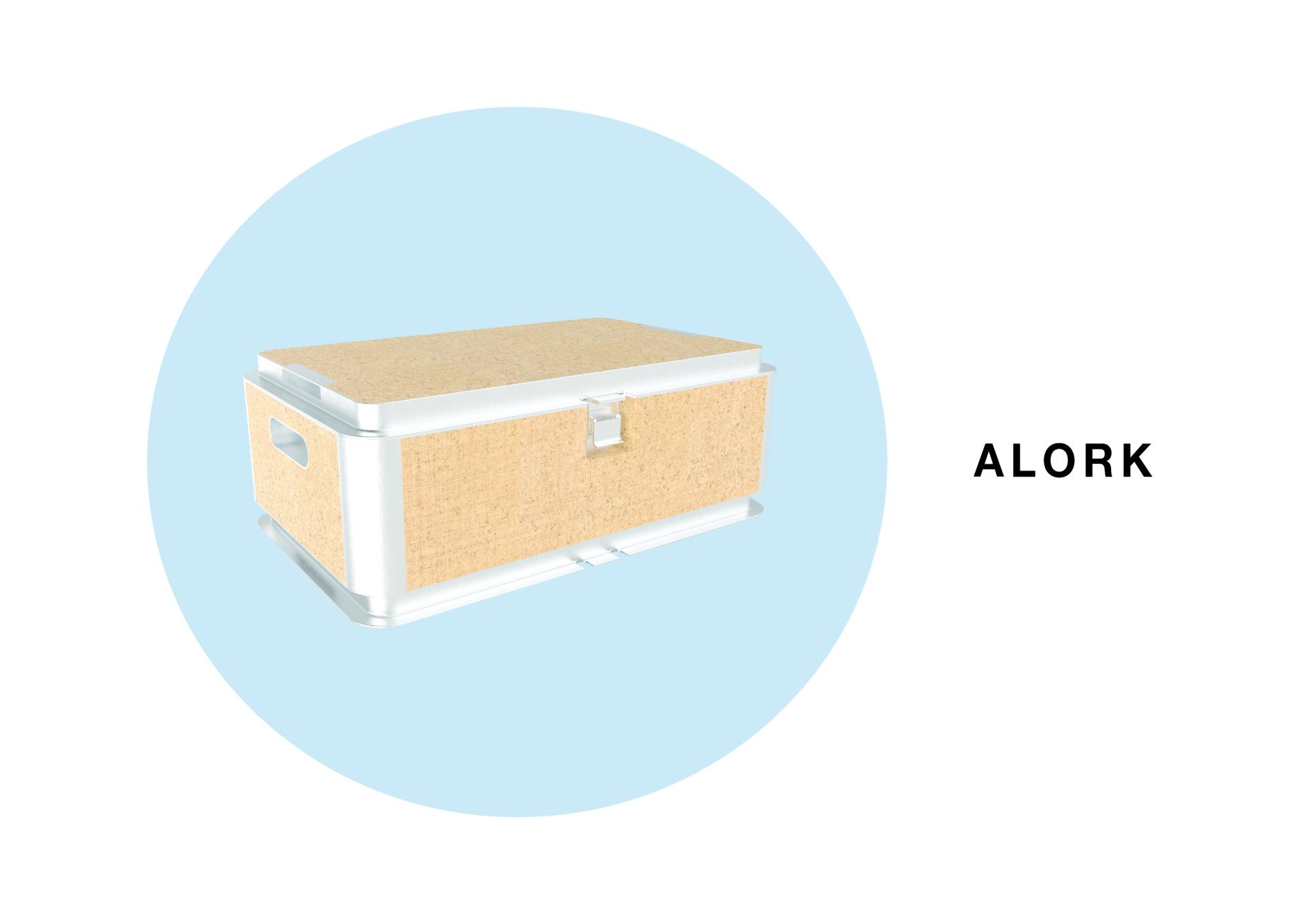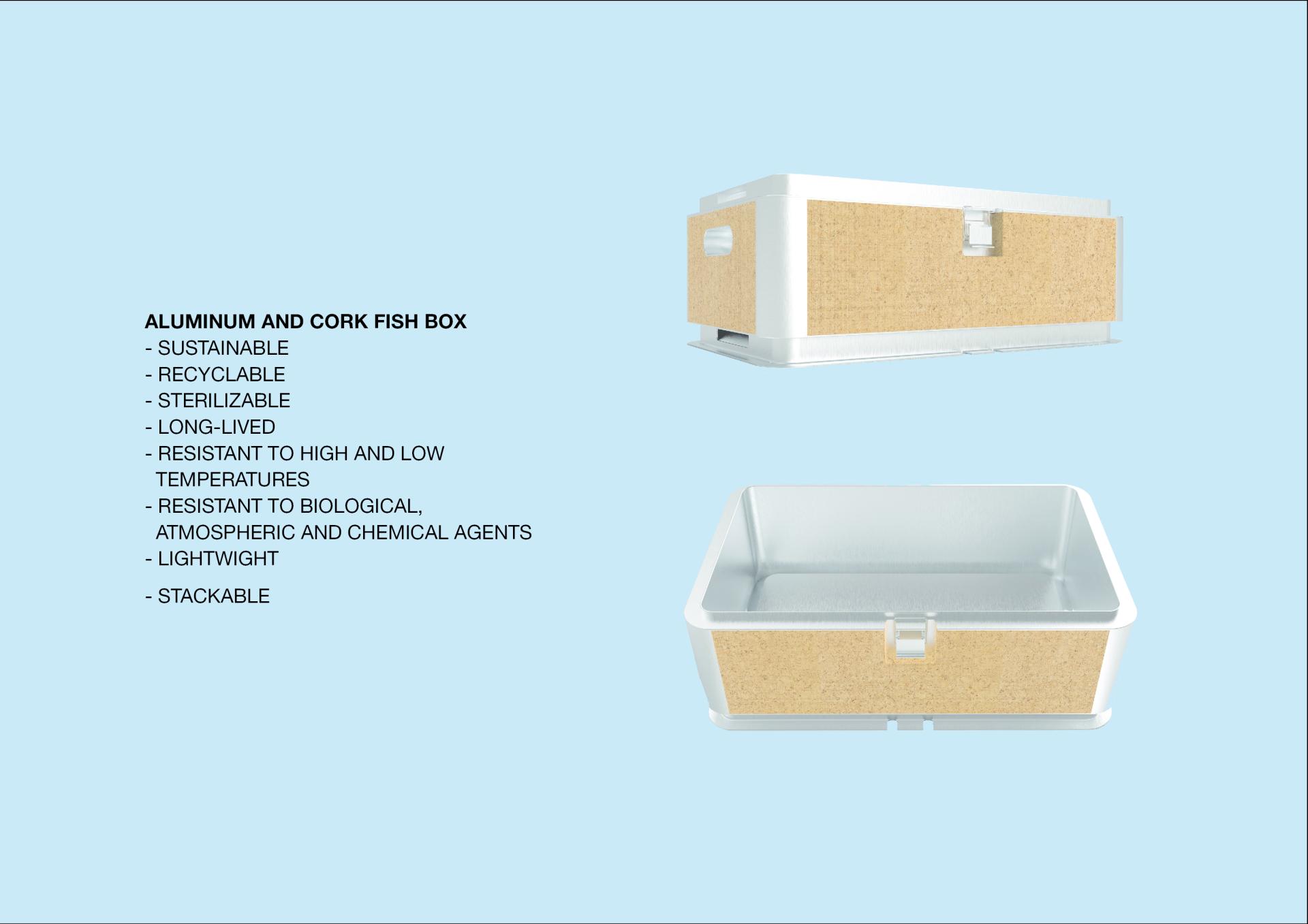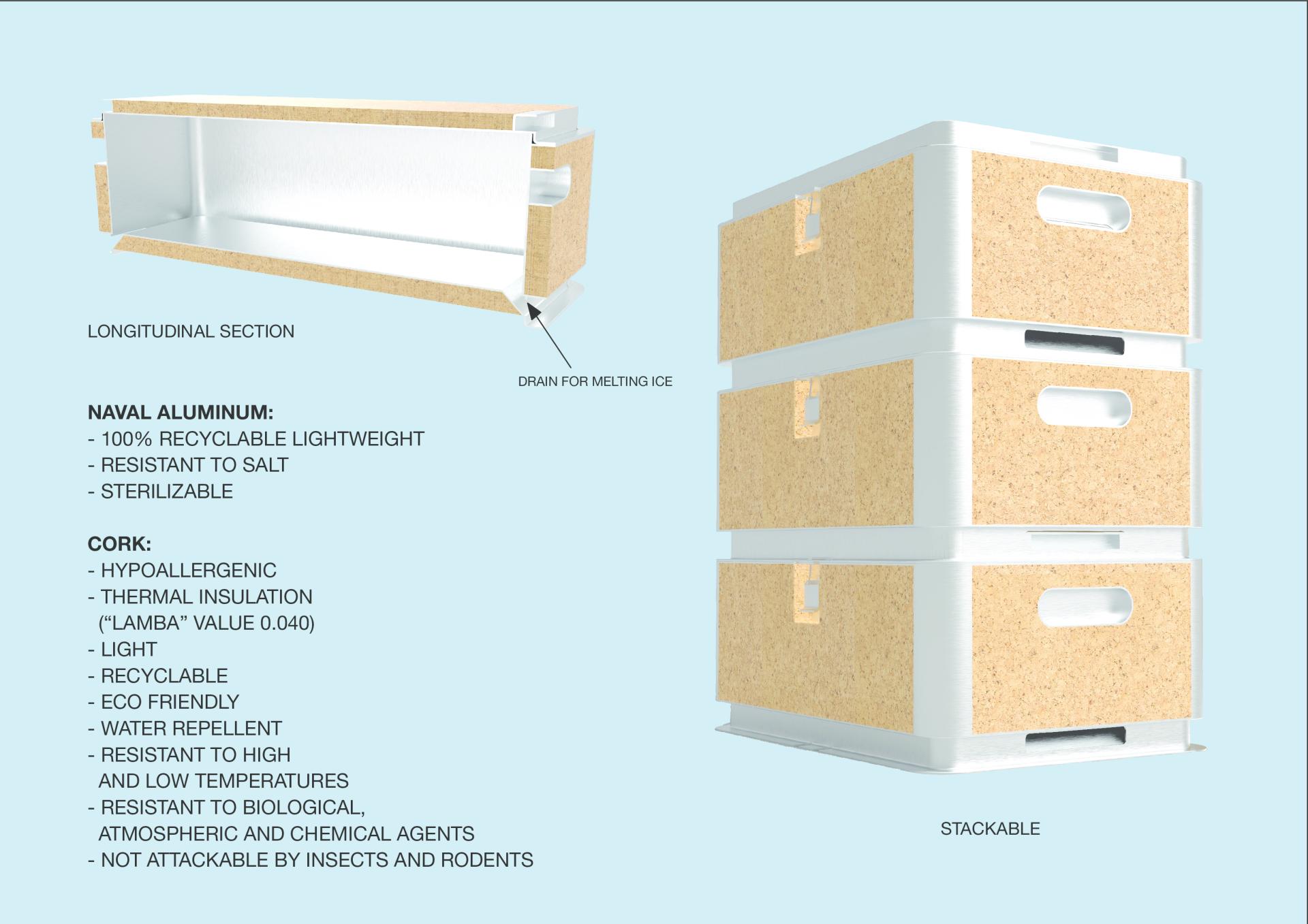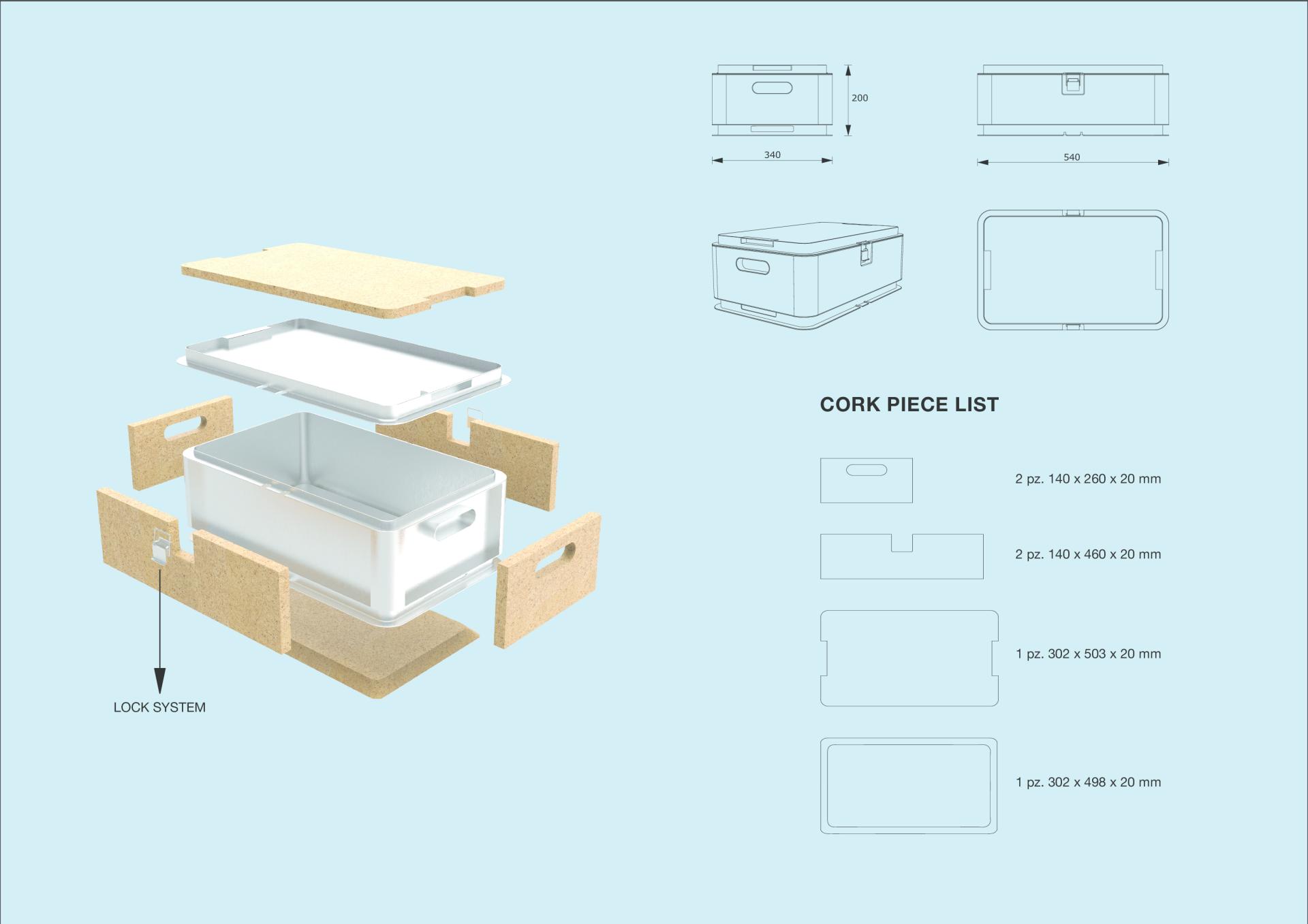Alork
Basic information
Project Title
Full project title
Category
Project Description
Alork is a box designed in aluminum and cork with the aim of eliminating from circulation the polystyrene containers currently used in the fishing industry. Alork is sustainable because unlike polystyrene boxes it is not disposable but can be reused indefinitely as it can be sterilized. Furthermore, once its life cycle has ended, aluminum and cork are easily recyclable. This project can be easily adapted to the food and pharmaceutical industry.
Geographical Scope
Project Region
Urban or rural issues
Physical or other transformations
EU Programme or fund
Which funds
Description of the project
Summary
Ive been working for many years as a sailor and I've been ever surprised to find even most isolated rocks or the least furrowed stretches of sea irremediably littered with plastic waste.
In most cases this waste is composed of polystyrene fragments which derive from the most common boxes used for the collection and sale of fish.
Alork arises from a personal need to reduce and avoid further releases of this type of waste to the seas.
The common polystyrene fish boxes are disposable objects, once used, as they are no longer hygienic, they must be eliminated and have the characteristic of being very fragile, cheap and light. Being fragile traditional fish boxes break easily, being light they can "fly" easily into the sea, finally being very economical their "dispersion" is not calculated as a important loss.
Alork has been designed to be long-lasting and easily recyclable, it is basically an aluminum box covered with cork. Like a traditional fish box, it is light and thermally isolates its contents, however at the end of its use it can be easily sterilized and used again. Cork is an exceptional natural material: it is ecological, recyclable, it is an excellent thermal insulator, it is resistant to high temperatures, it is not attackable by parasites, rodents, atmospheric, biological and chemical agents, it is hypoallergenic and finally it is very light. Aluminum is a very light metal and it is 100% recyclable. Alork can be stacked up, and on its two short sides it has two recesses to facilitate the user's grip,Example: in Italy we estimate a yearly consume of 10 millions of polysterene boxes in "disposable" mode. It is estimated that only between Ancona and San Benedetto more than 750,000 are used and a single box falling apart produces over a million of microplastic fragments which accordingly enter in our food chain and in consequence in our meals.
Key objectives for sustainability
The main aim of the project is to provide a valid alternative to the polystyrene boxes currently used by the fishing industry. Considering the enormous environmental impact that petroleum-derived materials have on our marine and terrestrial ecosystems, the main idea is to provide a valid and practical alternative non containing plastic materials, and is possibly composed of natural materials or at least with a low environmental footprint in their production. Concerning this fact a box of aluminium and cork has been chosen in the attempt to compensate the potential and the deficit of both materials and to overcome the proper and winning properties of the common used objekt currently produced polysterene. From the union of two unique materials such as cork and aluminum, it has been possible to design a product that exceeds the performance of the starting model the polysterene fish box) and which first of all surely proves a lower environmental impact.
Unlike conventional polystyrene boxes, Alork must not be disposed of at the end of its use but can be washed and sterilized almost indefinitely for further uses.
Furthermore, the materials used for its construction are very resistant to wear, mechanical stress, temperature changes and atmospheric conditions, turne the objects to be long-living, riusable and they avoid the necessity to replace the obket with a new product in a short period of time.
At the end of its life cycle, both materials can be disposed of separately. Aluminum is 100% recyclable while cork can be shredded to create new composites. The compared higher production costs, on the other hand, are recovered from the longer duration of the objects over time,
Alork at the end of each use can be easily sterilized by steam bath or exposure to UV rays.
Key objectives for aesthetics and quality
The proposed project consists of a minimal design in which the shape is totally dependentto the use of the objekt.
The shape of Alork was designed for its possible field of use, in this case the maritime industry, characterized by high mechanical and atmospheric stress and by not very careful users. Therefore it was decided to eliminate from the object anything that was not functional or that represented a breaking point. The materials in addition to their mechanical and ecological characteristics have been chosen for their aesthetic peculiarities. In a rough world like the maritime industry, in which wear and attention to costs make objects ugly, we wanted to insert a product whose external appearance immediately gives an impression of cleanliness, and whose materials give at the first impact a sense of sustainability. Furthermore, the materials used, thanks to their proper characteristics, do not need to be painted, thus eliminating a further negative environmental impact.
The chromatic separation of cork and aluminum and the rounded edges give lightness and grace to an object which is common and anonymous in itself, such as a fish box, highlighting the noble role that this object wants to achieve from an ecological point of view.
Key objectives for inclusion
In a world where we talk and think more and more about ecological transition, this project has the potential to make everyone reflect on the environmental and social impact of our daily choices and about the objects we daily use. It is not spread to use plastic materials but it is spread to abuse in the use and purchase of the immense quantity of disposable objects Especially for the world of designers at the one hand it could be a starting point to look back on past solutions and update those solutions considering new technological proceedings , at the other hand it could be a stimulating for contemporary designers to get to a new perspective of design not based on profit but searching for solutions protecting the environment. I think it is interesting to modern design to be able to develop new technical and environmental solutions able to generate social and economic profit.
Physical or other transformations
Innovative character
Considering the environmental impact that polystyrene boxes currently have on marine and terrestrial ecosystems my project aims to combine three real needs: to be sustainable for a particular branch of industry, to avoid the shocking environmental impact, to be functional and estetical easy tro poduce and to use. It is a prospective for this particular branch to offer a product which makes the difference for a straightaway greener future which is one of the main desires of Europe and its citizenship.




